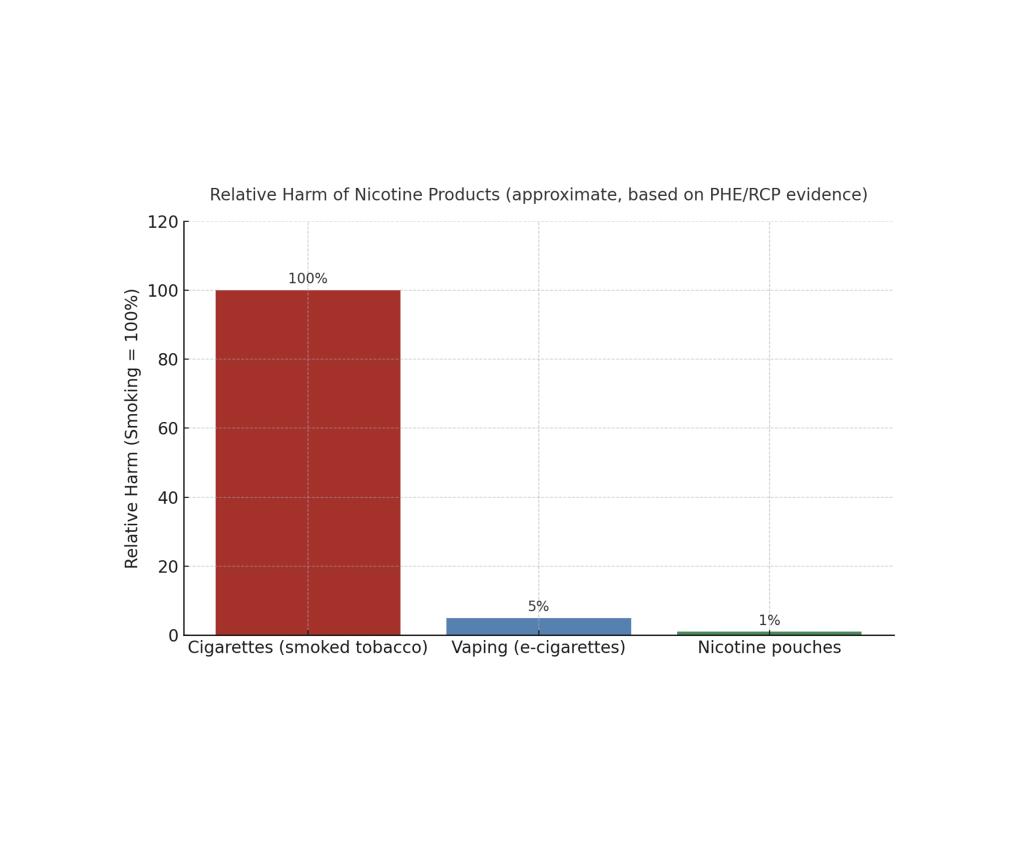Förbättrad folkhälsa i modern tid är i hög grad beroende av minskad tobakskonsumtion. När grundläggande behov som trygghet och försörjning är tillgodosedda söker sig människor ofta till aktiviteter som paradoxalt nog äventyrar deras välbefinnande. Det kan handla om ohälsosamma matvanor, drogmissbruk, tobaksbruk och en livsstil med hög stressnivå. Samtidigt har uttrycket harm reduction blivit ett slagfält för olika åsikter.
Bland dessa skadliga beteenden utmärker sig tobaksbruk som särskilt skadligt för hälsan. Att minimera tobaksrelaterade skador är avgörande, även om begreppet skadereduktion fortfarande är ett omtvistat ämne bland experter.
Tobak skördar över 6 miljoner liv varje år, vilket är dubbelt så många dödsfall som alkoholrelaterade dödsfall, och därför är det viktigt att minska skadeverkningarna. Men vad är lösningen? Vissa experter förespråkar att man slutar helt med tobak eller att man tar en "kall kalkon". Forskning visar att denna metod, särskilt när den kombineras med terapeutiska insatser som kognitiv beteendeterapi, ger lovande resultat.
Traditionella nikotinersättningsbehandlingar, som plåster eller tuggummi, ersätter en form av nikotin med en annan. Även om dessa metoder hjälper till att hantera fysiska abstinenssymtom, misslyckas de ofta med att ta itu med det underliggande nikotinberoendet, och deras effektivitet är fortfarande en besvikelse.
Sluta bara, varför gör du inte det?
Att råda rökare att helt enkelt sluta är lika ineffektivt som att säga till dem som kämpar med fetma att bara äta mindre. Nikotinets kraftigt beroendeframkallande egenskaper kan fängsla användare även vid tillfällig konsumtion. Alternativa nikotintillförselmetoder som påsar, plåster eller tuggummi minskar hälsoriskerna avsevärt. Den främsta faran ligger i tobaksförbränning, som producerar tjära och många giftiga föreningar. Därför minskar hälsoriskerna avsevärt om man byter till rökfria tobaksprodukter, inklusive snus och tuggtobak.
Detta leder oss till en komplex situation. Trots sin historia av manipulering av vetenskapliga data marknadsför tobaksindustrin nu "harm reduction" som en innovativ lösning. Icke-statliga organisationer, medier, läkemedelsföretag och andra intressenter är dock fortfarande skeptiska till dessa påståenden.
I Sverige, där rökfri tobak har använts sedan 1820-talet, har snus använts. rökningsfrekvensen är anmärkningsvärt lägre än i jämförbara länder. Korrelationen mellan användning av rökfri tobak och minskad rökning är uppenbar. Men i dagens medielandskap, som drivs av engagemangsmätningar, kontroverser och känslomässiga tilltal, framställs strategier för att minska skadeverkningarna ofta som motståndare till ett tobaksfritt liv. Och därmed ses de inte som något annat än en djävulsk plan från tobaksindustrin.
Harm reduction har blivit ett slagfält för åsikter
I januari 2025 meddelade den amerikanska läkemedelsmyndigheten Food and Drug Administration godkänd ett sortiment av nikotinpåsar som nikotinersättningsmedel. Kanske kommer motståndet från läkemedelsindustrin mot nikotinportioner som NRT inte att vara lika intensivt nu. Men jag skulle inte satsa på det. Att inte vara beroende av något är en underbar sak. Men kanske kan vi vara resonabla?
Det finns många influencers som försöker övertyga beslutsfattare om att nikotinportionernas enda funktion är att locka in unga människor i ett nikotinberoende. I stort sett alla produkter i Swedish Smokeless sortiment är formulerade och designade för att attrahera vuxna rökare. Och om någon provar våra produkter och bestämmer sig för att fortsätta med dem, är hälsoriskerna en bråkdel av att röka tobak.
När det perfekta (som innebär ett nikotinfritt liv) har blivit det godas huvudfiende (som är beprövad och testad skadereduktion) - vem vinner?





